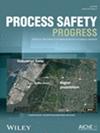Safety attitudes among workers in Malaysian chemical manufacturing plants
IF 1
4区 工程技术
Q4 ENGINEERING, CHEMICAL
引用次数: 0
Abstract
Statistics in Malaysia show that accident cases in the manufacturing industry are the highest compared with other sectors. Concerns regarding changing workers' attitudes, controlling their current perceptions, and installing knowledge and experiences that travel through the culture are necessary. This study investigates workers' attitudes to safety between executives and operators. A total number of 309 respondents voluntarily participated. Results report that respondents' attitude toward individual responsibility (M = 4.24, SD = 0.63) is the highest, followed by the effectiveness of safety arrangements (M = 3.91, SD = 0.81) and safeness of the work environment (M = 3.17, SD = 0.73). Results revealed a significant difference between groups (t = 6.67, p = 0.014) for personal skepticism and (t = 15.775, p = 0.001) for personal immunity. There was a statistically positive correlation between attitudes measured with selected demographic factors. It can be concluded that increases in the level of education were associated with increases in individual responsibility, and an increase in age was directly correlated with increases in the effectiveness of safety arrangements. Furthermore, different groups of workers influence their attitudes toward safety arrangements and safeness of the work environment. This study can be used as a preliminary study or the first step for enhancing an organizational safety culture through behavior and attitude change.马来西亚化工厂工人的安全态度
马来西亚的统计数据显示,与其他行业相比,制造业的事故发生率最高。因此,有必要关注工人态度的转变,控制他们当前的观念,并在文化中植入知识和经验。本研究调查了管理人员和操作人员对工人安全的态度。共有 309 名受访者自愿参与。结果显示,受访者对个人责任的态度(M = 4.24,SD = 0.63)最高,其次是安全安排的有效性(M = 3.91,SD = 0.81)和工作环境的安全性(M = 3.17,SD = 0.73)。结果显示,在个人怀疑态度和个人免疫力方面,组间存在明显差异(t = 6.67,p = 0.014)和(t = 15.775,p = 0.001)。从统计学角度看,所测量的态度与选定的人口因素之间存在正相关。由此可以得出结论,教育水平的提高与个人责任感的增强有关,而年龄的增长与安全安排有效性的提高直接相关。此外,不同的工人群体会影响他们对安全安排和工作环境安全的态度。本研究可作为一项初步研究,也可作为通过改变行为和态度来加强组织安全文化的第一步。
本文章由计算机程序翻译,如有差异,请以英文原文为准。
求助全文
约1分钟内获得全文
求助全文
来源期刊

Process Safety Progress
工程技术-工程:化工
CiteScore
2.20
自引率
10.00%
发文量
99
审稿时长
6-12 weeks
期刊介绍:
Process Safety Progress covers process safety for engineering professionals. It addresses such topics as incident investigations/case histories, hazardous chemicals management, hazardous leaks prevention, risk assessment, process hazards evaluation, industrial hygiene, fire and explosion analysis, preventive maintenance, vapor cloud dispersion, and regulatory compliance, training, education, and other areas in process safety and loss prevention, including emerging concerns like plant and/or process security. Papers from the annual Loss Prevention Symposium and other AIChE safety conferences are automatically considered for publication, but unsolicited papers, particularly those addressing process safety issues in emerging technologies and industries are encouraged and evaluated equally.
 求助内容:
求助内容: 应助结果提醒方式:
应助结果提醒方式:


